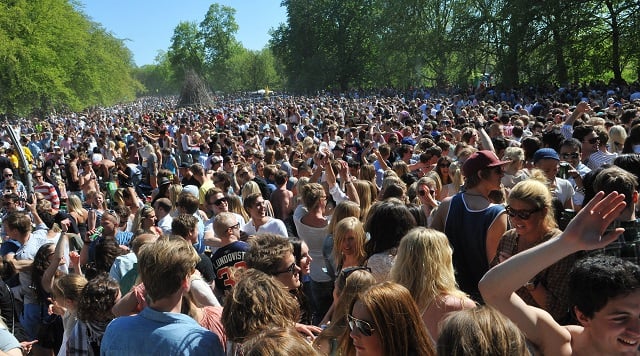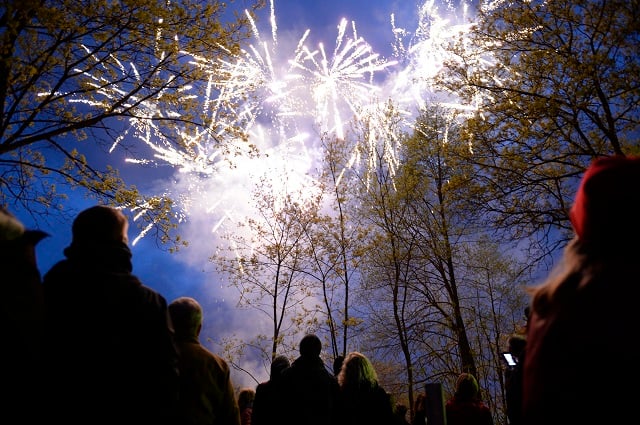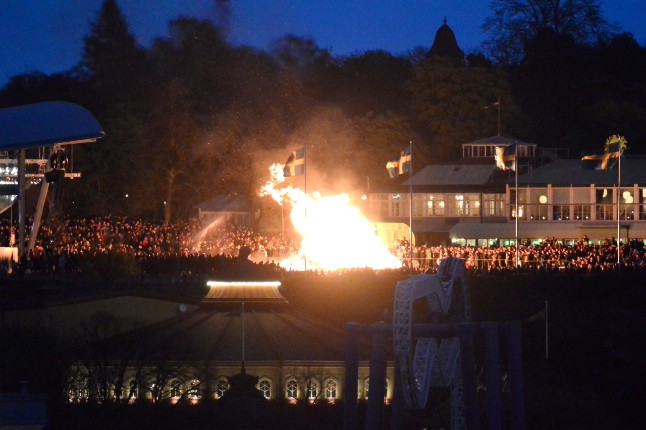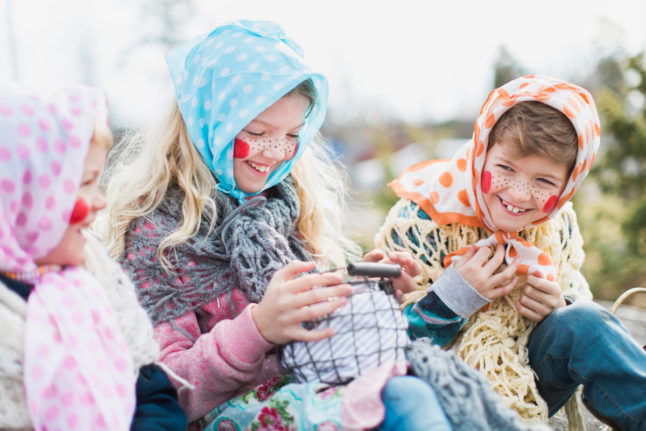On April 30, or Valborgsmässoafton, large bonfires, said to ward off evil spirits, are lit in public parks across the country. People gather to listen to speeches and songs welcoming a brighter future.
Over the past two years, pandemic restrictions have meant smaller celebrations and limited public gatherings for these annual festivities, but this year, festivities will take place with their full force across the country.
Student cities of Lund and Uppsala
Some of the biggest (and most drunken) celebrations take part in the student cities of Lund and Uppsala.
In Lund, there’s a big celebration of some 30,000 people in the main city park. This is known as spontanfesten or ‘the spontaneous party’ since there are no official organisers, but like most things in Sweden, it’s actually fairly well planned.
The picnics last until 3pm when things get set up for the official celebrations. These begin at 8pm with a bonfire, music, and later, a fireworks show.

In Uppsala, the real action happens in the student “nations”, the student fraternities/housing associations which are not open to the general public. But expect the parks to be full of drunken students from breakfast onwards.
A highlight is the traditional raft race down the Fyris river running through the city, for which students design their own inventive vessels.
At 3pm, in front of the University Library you can watch (or take part in) the Donning of the Caps. The Vice Chancellor waves her own white cap as a signal of spring to the students gathered in the square, who in turn wave their own and then put them on.
This is followed by a performance from a male voice choir on the library steps. Later in the evening, there are two large bonfires: one at the Royal Mounds in Gamla Uppsala, lit at 9pm and followed by fireworks. There is another bonfire by the castle in the city centre.
Stockholm
In Stockholm, head to the Skansen park, where there will be a big bonfire lit at 9pm near the Solliden stage, with speeches, singing, and spectacular views over the city.
This is a great option for families, as you can make a day of it by visiting the zoo and the open-air museum of historic buildings from across Sweden. Be aware of the entry fee, although anyone with a valid student ID can get free admission.
Most of Stockholm’s big fires are south of Södermalm, with a family-friendly option at Enskedefältet, and others in Bandängen, at Nytorps gärde, and in Årsta.
For those wanting to celebrate in the archipelago, Grinda, near Växholm has one of the biggest events.

Gothenburg and Malmö
In Sweden’s second city, one of the best known traditions is Chalmerscortégen (The Chalmers Cortège), a carnival parade run by the Chalmers University of Technology.
It’s been going since the 1900s, with around 50 floats representing a satirical take on major events that have taken place over the past year. Each April, thousands gather to watch the parade make its way through the city streets, and it starts at 6.15pm.
There’s a spring concert at Nackrosdammen, a lily pond near the city centre. And in the evening, the biggest fire will be in Slottsskogen, where ‘witches’ will light the bonfire, and plenty of activities are on offer for families and people of all ages. The celebrations start from 4pm with the fire lit at 8.30pm.
The Akademiska kören choir will perform.
In Malmö, the municipality is not arranging a Valborg celebration this year. But the Social Democrats are arranging events around the city, in conjunction with ABF, the party-affiliated education organisation.
By Lisa Catterall and Richard Orange



 Please whitelist us to continue reading.
Please whitelist us to continue reading.
Member comments